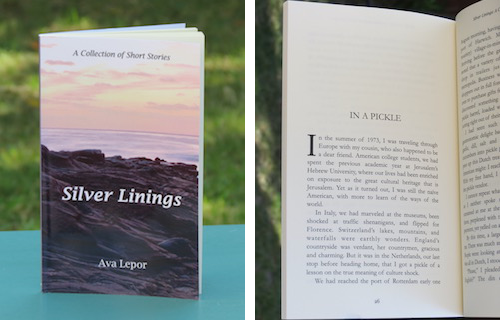Scroll down for printing and usage instructions. Scroll to the bottom for usage disclaimer. Read on from the top for the story behind the ruler:
Click here to download the printable PD ruler (includes instructions) (PDF)
Last year, I was looking for a new pair of glasses, and I decided I’d try ordering glasses online. But besides entering in my vision prescription, I also needed to provide my Pupillary Distance (PD) measurement, which is the distance in millimeters between the centers of the pupils of your eyes. But I wasn’t quite sure what to enter, as I had gotten slightly conflicting numbers from different optometrists in the past. I was also helping a couple relatives who similarly wanted to order glasses online, and they didn’t have any information for the PD measurement on their prescriptions at all! So I needed a way to find the measurement.
I found that online glasses providers have available PD rulers that anyone can download, print, and with the help of a friend or a mirror actually find their PD number. I tried a couple different PD rulers, but I wasn’t completely satisfied with them. One was useful for getting a single PD reading but couldn’t help with getting a more precise value for each eye, another was meant for getting the dual PD reading (the separate value for each eye between the center of the pupil to the vertical center of the face) but it was hard to actually read the measurement and didn’t feel well positioned. Not satisfied with the other rulers, I decided I could take my graphic design skills and do one better.
Using what I had learned from our various efforts at getting an accurate PD number and noticing where the other rulers felt less user friendly, I went into Inkscape, my vector illustration program of choice, and made my own. After a few iterations, I had a ruler which I was happy with, we got our PD numbers, and we ordered our glasses.
Recently, going through my old work, I thought that these days, a lot of people might feel less comfortable going to shop for new glasses in stores, and so this PD ruler I had already created might be of use to more people. And so I prepared it in a format and with instructions for anyone to use, and so I am sharing it here, a free, downloadable, printable, PD ruler! (And later, this tool was updated in December 2020 with alternate nose cutouts on the second, lower, ruler to ensure it will work better for a variety of faces!)
If you would like to offer any feedback or request any changes to it, feel free to leave a comment, and I’ll see if I can tweak it or make a customized version for you. Usage instructions continue below.
___________________
Help Keep This Free
To interrupt this post with a quick request, if you find this PD ruler useful, please consider taking a moment and making a donation using the PayPal Donate button below to allow me to continue providing and maintaining free projects like this. Thank you! (Usage instructions continue below.)
___________________
To use the ruler, you will need a printer, paper (thicker paper works best), and scissors to cut out the ruler. Click here to download the PDF of the ruler, and print it at 100% scale on US Letter paper (8.5 by 11 inches). Use another ruler that can measure in millimeters to compare it to the printed version and ensure that it matches perfectly. Then simply follow the instructions on the PDF on how to prepare and use the ruler. When you use it, be sure to hold the paper straight and not bend it against your forehead, as that may skew the results. For best results, measure your PD multiple times and with different methods to minimize the chance of inaccurate results. I’d also encourage you to try other PD rulers and find other online guides and videos to help demonstrate how to properly use a PD ruler.
Note that a PD number can be expressed either as a binocular Single PD (total distance between centers of pupils) or as a monocular Dual PD (a separate value for each eye between the center of the pupil to the center between your eyes, which can also be added together to equal the Single PD). When buying glasses, you may be required to enter either your Single or Dual PD. This ruler is a free tool to measure your PD, with instructions for measuring your Distance PD (your PD when looking at a distant object, which is a few mm larger than when you are looking at a close-up object), both for a Single PD and for a Dual PD, whether measured in a mirror or with the assistance of a friend. Your Distance PD is the proper number to use for a distance vision prescription. However, if you need your PD number for a close-up vision prescription, the PD number for that would be a few millimeters lower than your Distance PD. E.g., if your distance single-PD is 60, your close-up PD may be 56 or 57.
Although the PDF has the instructions listed on it, I’ll also provide them here:
To prepare this ruler, print this at 100% scale on US Letter paper (8.5 by 11 inches). (Thicker card stock paper will produced better results.) Ensure it was printed at the proper scale by comparing this PD ruler with another ruler measured in millimeters. Then cut the perimeter of one of the two PD rulers below along the dotted outer line. Fold on the horizontal center line. (Double-sided tape or glue will help the ruler stay flat and stable.) If the ruler sits too high or low on the face to get a good reading on the Dual PD side, try using one of the alternate higher or lower nose cutouts—indicated in light gray on the second ruler—for a better fit.
To measure Single PD, begin by holding PD ruler flat against your forehead with the Single PD ruler side down, just above your pupils.
Method 1 (using a mirror): Standing in front of a mirror with the PD ruler in place, close your right eye, and align the 0mm marker over the center of your left pupil. Then, without moving the ruler, open your right eye, close your left eye, and see which point is above the center of your right pupil. This is your Single PD, in millimeters.
Method 2 (using an assistant): With assistant holding PD ruler in place, assistant should face you squarely and close their right eye. With you looking at assistant’s open eye, assistant should align the 0mm marker over the center of your right pupil. Assistant should then open their right eye and close their left eye, and with you looking at assistant’s open eye, assistant should see which point is above the center of your left pupil. This is your Single PD.
To measure Dual PD, begin by placing the PD ruler flat against your forehead, resting it centered on the bridge of your nose, with the Dual PD side down, and your pupils visible under the L (left) and R (right) eye cutouts.
Method 1 (using a mirror): Standing in front of a mirror looking straight on, with PD ruler in place, close your right eye and note which point is above the center of your left pupil. This is your left eye PD, in millimeters. Repeat, with your left eye closed and right eye open, for the PD of your right eye.
Method 2 (using an assistant): With assistant looking squarely at you and holding PD ruler in place, assistant should close their right eye. With you looking at assistant’s open eye, assistant should note which point is above the center of your right pupil. This is the PD for your right eye. Assistant should repeat the process, with their left eye closed and right eye open, for the PD of your left eye.
Note: Getting an accurate Dual PD reading may be more challenging than a Single PD. You must be especially careful to look at the mirror or your assistant perfectly straight on with no rotation of your face so the proper point on the ruler will visually align with your pupil.
Disclaimer: This PD ruler tool was made as a personal project. This ruler and its associated information and instructions were not produced by vision professionals. The information and instructions provided here and on the PD (Pupillary Distance) ruler is not intended to be medical or vision advice. Consult your vision specialist for help in determining what information you need relating to your PD number and how you should determine your PD measurement(s). This tool is provided without warranty. Like any printable PD ruler, this may not produce results as accurately as can be measured by a vision professional. User assumes all responsibility for use of this ruler.


















